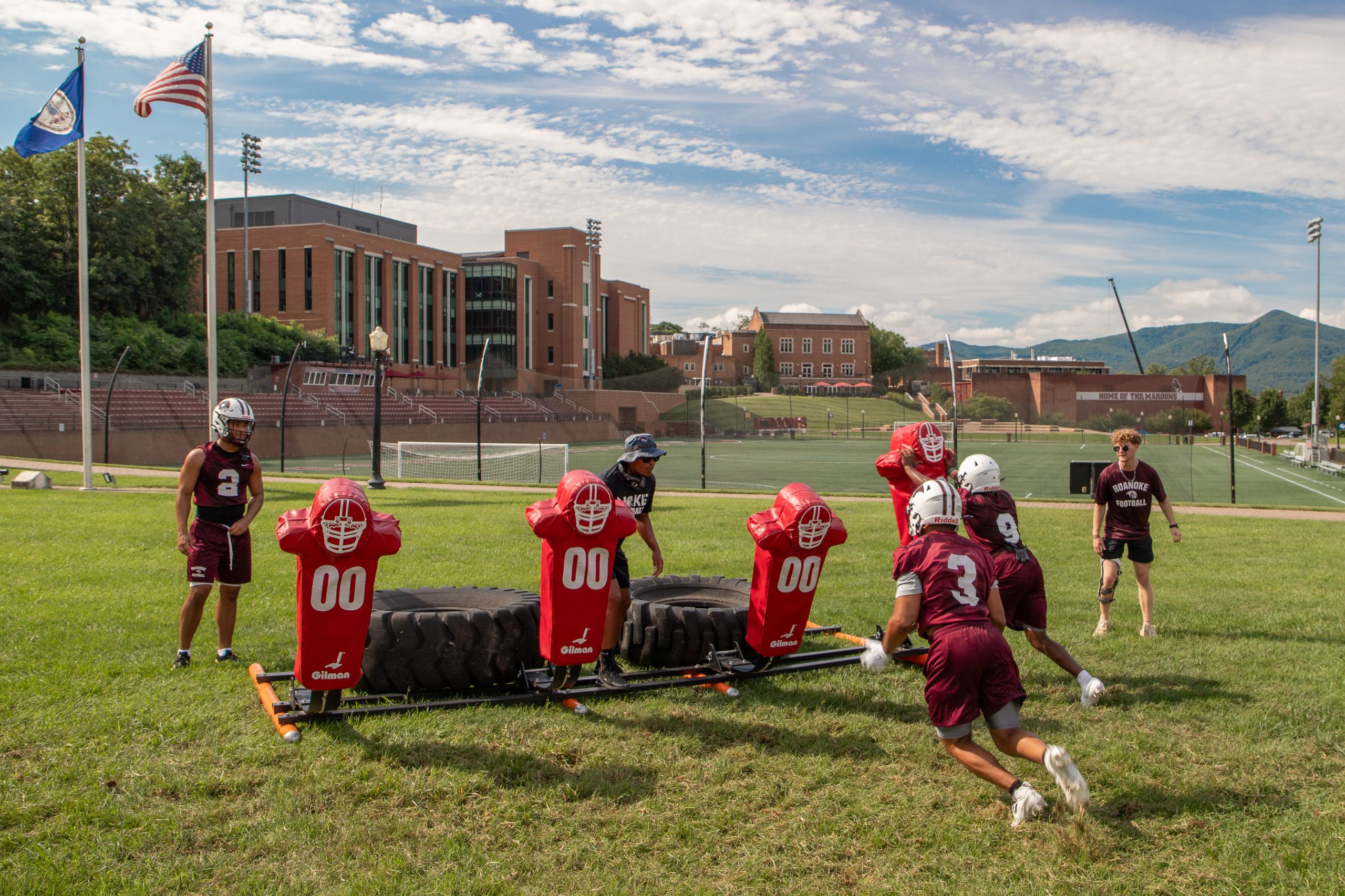When I was prepping up for Policy Radar in October, I gave some brief thought as to how students are positioned and imagined in the Post-16 Education and Skills White Paper.
And if you’re not a fan of the student-as-consumer framing that has dominated policy for over a decade, I have bad news.
“Good value for students” will be delivered through “quality” related conditional fee uplifts, and better information for course choice.
Ministers promise to “improve the quality of information for individuals” so they can pick courses that lead to “positive outcomes” – classic consumer-style transparency, outcome signalling and value propositions.
And UCAS is leaned on as the main choice architecture for applicants, promising work to improve the quality, prominence and timing of information that applicants see.
I won’t repeat here why I don’t think that student-as-consumer is anything like as damaging as some do. It was the subject of the first thing I ever wrote for this site, and the arguments are well-rehearsed.
What I am interested in here is the extent to which the protections that are supposed to exist for students as consumers are working. And to do that, I thought I’d take a little trip down memory lane.
Consumers at the heart of the system
Back in 2013, when reforms were being implemented in England to triple tuition fees to £9,000, there had been a very conscious effort in the White Paper that underpinned those changes to frame students as consumers.
HEFCE was positioned as a “consumer champion for students” tasked with “promoting competition”, we learned that “putting financial power into the hands of learners makes student choice meaningful” and a partnership with Which? was to improve the presentation of course information to help students get “value for money”.
The “forces of competition” were to replace the “burdens of bureaucracy” in driving up the quality”, the system was to be designed to be “more responsive to student choice” as a market demand signal, the National Student Survey was positioned as a tool for consumer comparison, and the liberation of number controls that had previously “limit[ed] student choice” was to enable students to “vote with their feet”.
Students were at the heart of the system – as long as you imagined them as consumers.
The Office for Fair Trading (OfS) wasn’t so sure. The Competition and Markets Authority’s predecessor body had been lobbied by NUS over terms in student contracts that allowed academic sanctions for non-academic debt – and once that was resolved, it took a wider look at the “market” (for undergraduate students in England) to see whether it was working.
It was keen to assess whether the risks inherent in applying market mechanisms to public services – information asymmetries, lock-in effects, regulatory gaps, and race-to-the-bottom dynamics – were being adequately managed.
So it launched a call for information, and just before it got dissolved into the CMA, published a report of its findings with recommendations both for the successor body and government.
Now, given the white paper has done little to change the framing, the question for me when re-reading it was whether any of the problems it identified are still around, or worse.
The inquiry was structured around four explicit questions – whether students were able to make well-informed choices that drive competition, whether students were treated fairly when they get to university, whether there was any evidence of anti-competitive behaviour between higher education institutions, and whether the regulatory environment was designed to protect students while facilitating entry, innovation, and managed exit by providers.
On that third one, it found no evidence of anti-competitive behaviour, and in the White Paper, the CMA is now said to be working with the Department for Education (DfE) to clarify how collaboration between providers can happen within the existing legal framework. It’s the others I’ve looked at in detail below.
Enabling students to make informed choices
The OFT’s first investigation area was whether students could make the well-informed choices that the marketisation model relied upon.
The theoretical benefits of competition – providers competing on quality, students voting with their feet, market forces driving standards – were only going to work if consumers could assess what they were buying. Given education is a “post-experience good” that can’t be judged until after consumption, this was always going to be the trickiest part of making a market work.
As such, it identified information asymmetry as one of three meta-themes underlying market dysfunction. Students were making life-changing, debt-incurring decisions with incomplete, misleading, inaccessible or outdated information – potentially in breach of Consumer Protection from Unfair Trading Regulations and rendering the entire choice-and-competition model built on sand.
On teaching quality indicators, students couldn’t find basic information about educational experience. Graham Gibbs’ research had identified key predictors – staff-to-student ratios, funding per student, who teaches, class sizes, contact hours – yet none were readily available. Someone reviewing physics courses couldn’t tell whether they’d get eleven or 25 hours weekly.
By 2014, the National Student Survey (NSS) was prominent but only indirectly measured teaching quality. Without observable process variables, institutions faced weak incentives to invest in teaching and students couldn’t exert competitive pressure. For OfT, the choice mechanism was essentially decorative.
On employment outcomes, career prospects were the major decision factor, yet DLHE tracked employment only six months post-graduation when many were in temporary roles. The 40-month longitudinal DLHE had sample sizes too small for course-level statistics – students couldn’t compare actual career trajectories. It was also worried about value-added – employment data didn’t control for intake characteristics. Universities taking privileged students looked advantageous regardless of what they actually contributed – for the OfT, that risked perverse incentives where institutions were rewarded for cream-skimming privileged students rather than adding educational value.
It was also worried about prestige signals like entry requirements and research rankings crowding out quality signals. Presenting outcomes without contextualising intake breached a basic market principle – for the OFT, consumers should assess product quality independent of customer characteristics. And on hidden costs, an NUS survey had found 69 per cent of undergraduates incurred additional charges beyond tuition – equipment hire, studio fees, bench fees – many of which were unknown when applying, raising legal concerns and practical affordability questions.
The OFT recommended that HEFCE’s ongoing information review address coverage gaps around the learning environment including contact hours, class sizes and teaching approaches; that HEFCE and the sector focus on improving quality and comparability of long-term employment and salary data; that employment data account for institutions taking students with different backgrounds and abilities, acknowledging significant methodological challenges around controlling for prior attainment, socioeconomic background and subject mix; and that material information about additional costs be disclosed to avoid misleading omissions.
A decade later, things are much worse. DiscoverUni replaced Unistats but core Gibbs indicators remain absent. Contact hours became a political football – piloted as a TEF metric in 2017, abandoned as unworkable, then demanded by ministers in 2022 with sector resistance fearing “Mickey Mouse degrees” tabloid headlines. Staff ratios, class sizes and teaching qualifications still aren’t standardised. The TEF provides gold/silver/bronze ratings but doesn’t drill down to process variables or subject areas predicting actual experience.
On employment outcomes, things are marginally better but inadequate. Graduate Outcomes tracks employment at 15 months rather than six, but there’s still no standardised long-term earnings trajectory data at course level. On value-added, the situation is virtually unchanged. OfS uses benchmarks in regulation but these aren’t prominently displayed for prospective students. IFS research periodically demonstrates dramatic differences between raw and adjusted outcomes, but this isn’t integrated into official student-facing information.
The Russell Group benefits enormously from selecting privileged students whose career prospects would be strong regardless of institutional quality. Students can’t distinguish educational quality from privilege – arguably worse given increased marketing of graduate salary data without the context that would make it meaningful. And on hidden costs, the picture is mixed and hard to assess. There is no standardised disclosure format, no regulatory requirement for prominence at application, and a real mess over wider participation costs. The fundamental issue persists.
Most importantly, well-informed choices pretty much rely on the idea that information is predictive – whether you’re talking about higher education’s experience outputs or its outcomes, what a student is told is supposed to signal what they’ll get. But rapid contraction of courses (and modules within courses), coupled with significant changes in the labour market, all mean that prediction is becoming increasingly futile. That’s a market that, on OfT terms, doesn’t work.
The student experience at university
Back in 2013, the OFT identified lock-in effects as the second of three meta-themes undermining the market model.
Once enrolled, students were effectively trapped by high switching costs, weak credit transfer, financial complications and social costs. For the regulator, that fundamentally broke the competitive mechanism that the entire reform package relied upon. If students couldn’t credibly exit poor provision, institutions faced weak pressure to maintain quality after enrolment. The threat of exit – essential to making markets work – was largely hollow. That enabled institutions to change terms, raise fees and alter courses with relative impunity.
It found only 1.9 per cent of students switched institutions nationally. While around 90 per cent of institutions awarded credits in theory, there was no guaranteed right to transfer them with assessment happening case by case. Information about credit transfer was technical and non-user friendly. Students faced multiple barriers including difficulty assessing credit equivalence, poor information, financial complications and high social costs of relocating. And students leaving mid-year had to wait until next academic year to access funding again, particularly trapping disadvantaged students in unsuitable courses.
On fees and courses changing mid-stream, the OFT received reports of fees increasing mid-way through courses, particularly for international students – 58 per cent of institutions didn’t offer fixed tuition for international students on courses over one year. That contravened principles requiring students to know total costs upfront and potentially constituted aggressive commercial practices by exploiting students’ constrained positions.
Course changes posed similar problems – locations changing, modules reduced, lectures moved to weekends, content changing, modules unavailable. Terms permitting key features to change without valid reason were potentially unfair.
On misleading information, the OFT heard concerns about false or misleading information about graduate prospects, accreditation, qualification type, course content and facilities, breaching Consumer Protection from Unfair Trading Regulations. Institutions also failed to inform students of potential fee increases, course changes and mandatory additional charges – material omissions affecting informed decisions.
On complaints and redress, while resolution times were improving from 20 per cent taking over a year in 2009 to 5 per cent, still 12 per cent took six-plus months. Students often graduated before complaints were resolved. A power imbalance between students and institutions required accessible, clear pathways – yet students reported difficulty finding complaint forms, fear of complaining and being put off by bureaucratic processes. Many were unaware of the OIA or how to access it. There was no public data on complaints handled internally by institutions, meaning systemic problems remained hidden and students couldn’t make informed choices between institutions.
The OFT didn’t make formal recommendations on credit transfer, noting that difficulties arose partly from inevitable variations in how institutions structure degrees, but highlighted that institutions appeared to lack processes for assessing credit equivalence. It implied that fees and course terms needed greater transparency and stability, that misleading information must be eliminated, that academic sanctions should only apply to academic debt, that complaint processes needed to be faster and more accessible with transparency about complaint volumes, that OIA coverage should be comprehensive, and that the structural barriers to price competition needed addressing.
A decade later, the picture is bleak. Credit transfer has worsened substantially – despite being crucial to the Lifelong Learning Entitlement, it remains one of those old chestnuts where the collective impulse is to explain why it cannot happen. Multiple government attempts have been unsuccessful, and recent OIA complaints show students still don’t realise until too late that transferring will significantly impact loan funding or bursaries.
On fees and courses changing, the problem persists and legal standards have tightened considerably with both Ofcom and the CMA now viewing inflation-linked mid-contract price increases as causing consumer harm. The 2024 increase to £9,535 exposed widespread non-compliance with many institutions lacking legally sound terms.
Unilateral course changes without proper consent remain endemic. The CMA secured undertakings from UEA in 2017, and recent OfS and Trading Standards interventions have identified unreasonably wide discretion in terms, and this summer when I looked, less than a third had deleted industrial action from force majeure clauses.
On misleading information, the DMCC Act has tightened requirements but enforcement is patchy and two-tier with new providers facing enhanced scrutiny while registered providers don’t face the same requirements. Students still cannot bring direct legal claims for misleading omissions.
On complaints, in 2021 the OIA closed 2,654 complaints but failed to meet its KPI of closing 75 per cent within six months, and the OIA’s influence seems to be waning – with providers implementing good practice recommendations on time dropping from 88 per cent in 2018 to just 60 per cent recently – significantly worse than 2014. Provider websites still include demotivating language about the OIA having no regulatory powers, and there’s still no public data on internal complaints.
Almost every problem identified has persisted or worsened. Credit transfer remains a policy aspiration without practical implementation. Mid-course changes have intensified under financial pressure. Complaints resolution has deteriorated. Price competition remains absent. Students remain locked into courses with weak protections against opportunistic behaviour by institutions under financial strain.
The regulatory environment
The OFT identified regulatory-market misalignment as the third meta-theme. A framework designed for a government-funded sector was governing a student-funded market. As funding shifted, areas without direct public funding fell outside regulatory oversight, creating gaps in student protection and quality assurance. The regulatory architecture hadn’t caught up with the marketisation it was supposed to facilitate.
It found a system that relied on ad hoc administrative arrangements on decades-old frameworks, lacking democratic legitimacy and a clear statutory basis. Multiple overlapping responsibilities created extreme complexity – the Regulatory Partnership Group produced an Operating Framework just to map arrangements.
The OFT’s recommendations were implicit – comprehensive reform with primary legislation, simplified structures, reduced uncertainty, accommodation of innovation, competitive neutrality, independent quality assurance, clear exit regimes and quality safeguards.
Later in the decade, HERA 2017 provided primary legislation establishing the Office for Students (OfS) with statutory frameworks, attempting to address the funding model misalignment. But complexity has arguably worsened dramatically – and beyond OfS, providers and their students are supposed to navigate DfE, UKVI, HESA, QAA, OIA, EHRC, employment law, charity law, Foreign Influence Registration, Prevent and more.
Crucially, from a student perspective, enrolling is now riskier. Student Protection Plans exist but in sudden insolvency required funds are unlikely protected. OfS has limited teach-out quality monitoring. Plans are outdated and unrealistic – significantly worse than 2014. With financial pressures, there’s evidence of quality degradation – staff leaving, class sizes dwindling, any warm body delivering modules – yet OfS has no meaningful monitoring.
Survival strategies involve cutting contact hours, study support, module choices and learning resources. Quality floor enforcement remains weak. OFT’s predicted race to the bottom may be materialising.
What the OFT didn’t see coming
The 2014 report identified market failures within domestic undergraduate provision but couldn’t anticipate how internationalisation would create entirely new categories of consumer harm. The report barely addressed international students – who by 2024 would represent over 30 per cent of the student body at many institutions.
International student recruitment spawned multiple interlocking problems. International postgraduate taught students face hefty non-refundable deposits. When students discover agents pushed unsuitable courses or accommodation falls through they lose thousands, creating a regulatory dead-end where CMA refers complaints to OfS, OfS can’t update on progress and OIA says applicants aren’t yet students. UK universities pay agents 5-30 per cent of first-year tuition yet BUILA and UUKi guidelines advise against publishing commission fees. A BUILA survey found significant proportions of recruitment staff believe agents prioritise higher commission over best-fit programmes. A model where these “vulnerable consumers” are only around for a year and whose immigration status is managed by the university is not an ideal breeding ground for consumer confidence when something goes wrong.
Fee transparency has also emerged as a distinct problem the OFT couldn’t anticipate. Universities’ fee increase policies fail to comply with DMCC drip pricing requirements, using vague language like “fees may rise with inflation” without specifying an index, amount or giving equal prominence. The DMCC Act Section 230 strengthens requirements around total cost presentation – yet widespread non-compliance exists with no enforcement.
Time for a re-run
David Behan’s 2024 review of OfS argued that regulating in the student interest required OfS to act as a consumer protection regulator, noting the unique characteristics of higher education as a market where students make one-off, life-changing choices that cannot easily be reversed.
He recommended OfS be given new powers to address consumer protection issues systematically, including powers to investigate complaints, impose sanctions for unfair practices and require institutions to remedy harm.
The Post-16 Education and Skills White Paper contains no sign of these powers. Instead, OfS has developed something called “treating students fairly” as part of its regulatory framework, which applies only to new providers joining the register, and exempts the 130-plus existing providers where the problems concentrate.
The framework doesn’t address CAS allocation crises, agent commission opacity, accommodation affordability, the mess of participation costs information, mid-contract price increases, clauses that limit compensation for breach of contract to the total paid in fees, under and over-recruitment, restructures that render promises meaningless, a lack of awareness of rights over changes, weak regulation on disabled students’ access, protection that doesn’t work and regulator that hopes students have paid their fees by credit card. The issues the OfT identified in 2014 have not been resolved – they have intensified and multiplied alongside entirely new categories of harm that never appeared in the original review. And in any case, OfS only covers England.
There are also so many issues I’ve not covered off in detail – not least the hinterland of ancillary markets that quietly shape the “purchase”. Accommodation tie-ins and exclusive nomination deals that funnel applicants into PBSA on university letterheads. Guarantor insurance and “admin fees by another name”. Pressure-selling tactics at Clearing. Drip pricing across compulsory materials, fieldwork and resits with no total cost of ownership up front.
International applicants squeezed by CAS timing, opaque visa-refusal refunds and agent commission structures the sector still won’t publish. And in the franchising boom, students can’t tell who their legal counterparty is, Student Protection Plans don’t bite cleanly down the chain, and complaints ping-pong between delivery partner, validator and redress schemes.
Then there’s invisible digital and welfare layers that a consumer lens keeps missing. VLE reliability and service levels that would trigger service credits in any other sector but here are just “IT issues”. Prospectuses that promise personalised disability or welfare support without disclosing capacity limits or waiting times. Placements and professional accreditation marketed as features, then quietly downgraded with “not guaranteed” microprint when markets tighten.
And the quiet austerity of mid-course “variation” – fewer options, thinner contact, shorter opening hours, more asynchronous delivery – with no price adjustment, no consent and no meaningful exit. If this is a market, where are the market remedies?
What’s needed ideally is a bespoke set of student rights that recognise the distinctive features of higher education as an experience – the information asymmetries, the post-experience good characteristics, the lock-in effects, the visa and immigration entanglements and the power imbalances between institutions and individuals.
But if that’s not coming – and the White Paper suggests it isn’t – then the market architecture remains, and with it the need for functioning regulation.
The CMA should do its job. It should re-run the 2014 review to assess how the market has evolved over the past decade, expand its coverage to include the issues that have emerged, and use the powers that the DMCC Act has given it. By its own definitions, the evidence of harm is overwhelming.














